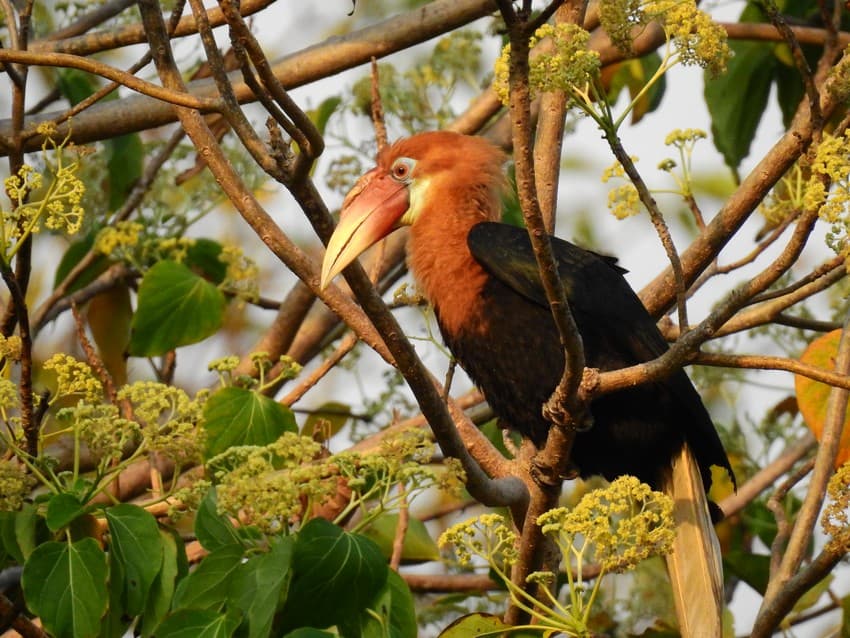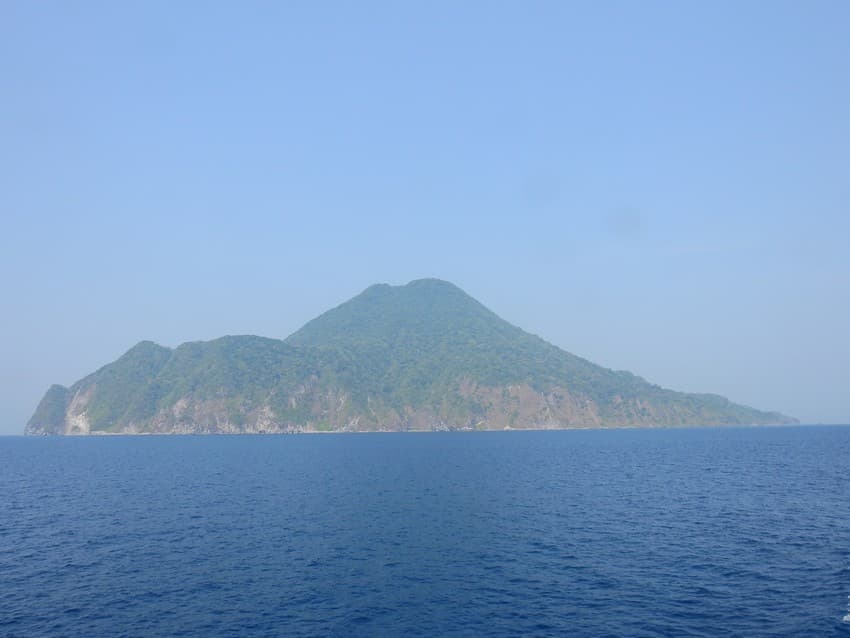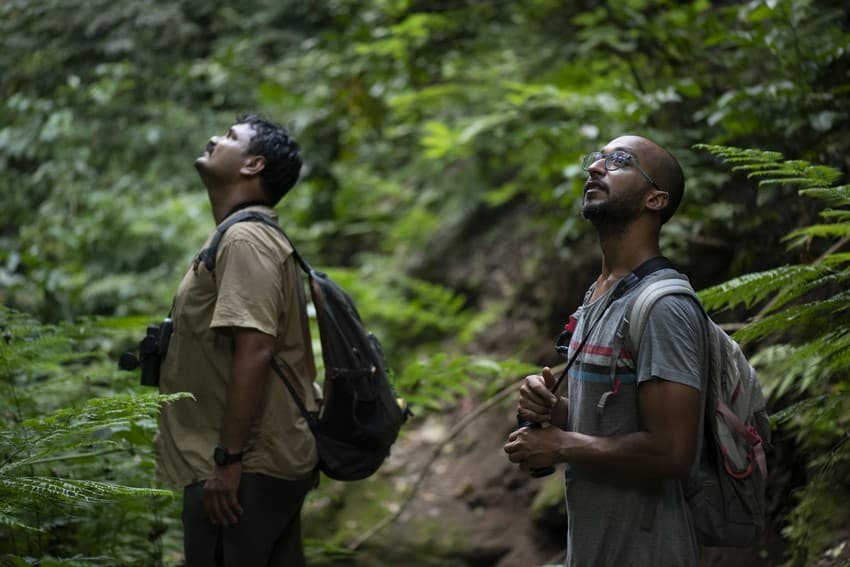Project Title
Conservation in Partnerships: The Unique Case of Narcondam Hornbill

Project Grantee
Rohit Naniwadekar (Ph.D, Scientist, Nature Conservation Foundation)
Q & A with the Grantee
1) What kind of partnerships has your project sought to build for the long-term preservation of the Narcondam Hornbill and other biota on the Narcondam Island?
This project has laid the initial foundation of our relationships with different agencies including the Forest Department, the Special Armed Police and the Coast Guard. We hope to work closely with them in the future. As a follow-up of this project, we have started developing a few ideas that will contribute towards securing long-term conservation of Narcondam Island and its unique biota. This includes outreach efforts using different mediums for different stakeholders. This project has also cemented long-term collaborations between the team members. We are planning future projects to continue contributing together to the conservation of the islands in our little way.
2) Could you narrate a watershed moment in the course of your project?
Accessing Narcondam Island requires permissions from multiple government agencies, and rightly so given its strategic location. In September 2019, we didn’t have permits to travel to Narcondam Island. Most people thought it would be very difficult to get the permissions in time since we were planning a visit to the Island in December 2019. Looking back, getting the permissions in time was one watershed moment. We got back from Narcondam and within no time the lockdown due to COVID-19 pandemic was instituted. If not for the timely receipt of the permissions, our plans would have gotten derailed. Getting on the island in the non-breeding season, allowed us to estimate the hornbill population accurately since females are not inside the cavities then (their breeding season starts in the last week of January and they are cavity nesters with the females sealing themselves inside their respective cavities for the entire length of the breeding season).
3) How will your study to understand the interactions between plants, frugivores and seed predators apply to oceanic islands elsewhere?
Island systems are unique, and Narcondam is a classic example of that. Our study has shown that Narcondam Hornbill is the most abundant frugivore on the island. It disperses seeds of most number of plant species making it critical for the maintenance of plant diversity. With no natural predators, invasive rats are a menace on oceanic islands. In Narcondam, we found that rats are predating heavily on seeds of important hornbill food plants with potential long-term consequences for plant regeneration. Apart from interactions, Navendu Page, a plant ecologist who is part of the team, identified around 215 species of plants on the island which has more than doubled the known plant diversity of the island. This is also one of the very few studies from the islands of the Indian Ocean, thereby filling a critical knowledge gap.


Images courtesy: Rohit Naniwadekar
